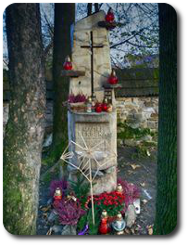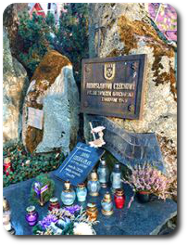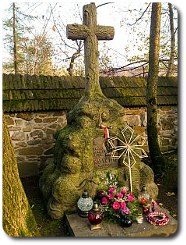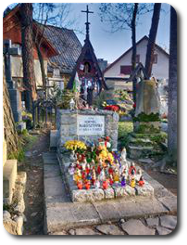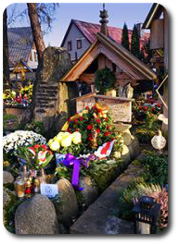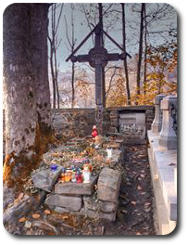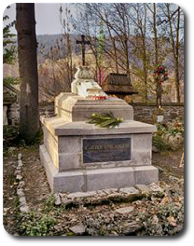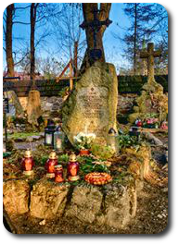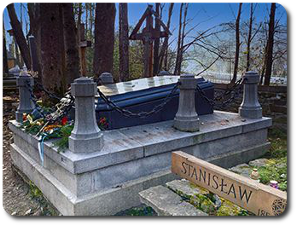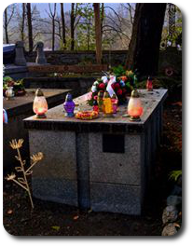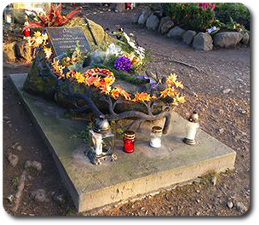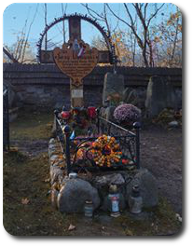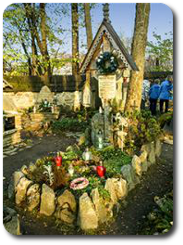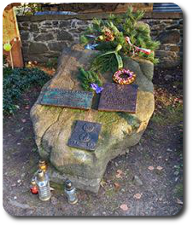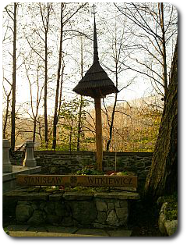Historic Graveyard
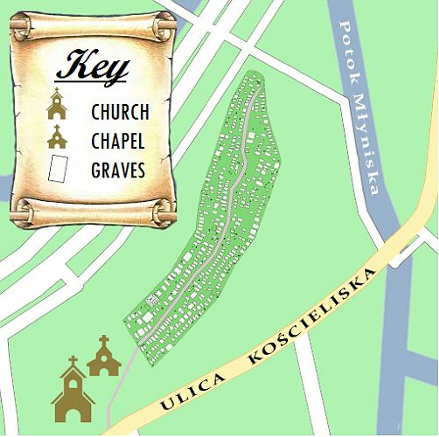
The Our Lady’s, formerly St. Clement’s, churchyard, dating back to the 19th century and named after Jan Peksa who donated the land. is a magical place and upon entering, you immediately feel a galvanising connection with the distinguished who’s who of yesteryear. Since 1920s, only the meritable citizens of Zakopane have been laid to rest here. While it may be a final resting place for the legends of Podhale, the necropolis, enveloped by a stone wall, is alive with enchanting folkloric sculptures, charismatic works of art which are worlds apart from the traditional rigid geometry of many modern burial grounds.
The eccentricity of the sanctuary itself is charming, the design faultless, decorated by timeless kaleidoscopic works of art which surround the striking altarpiece, as well as two smaller ones either side. It is an impeccable collection of traditional craftsmanship creating a tranquil ambience, much of which had been sculpted by self-taught, local artists.
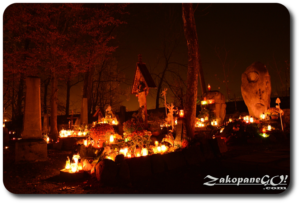
Among the notable names on the memorials are Stanislaw Witkiewicz, considered the father of the Zakopane style, and Jan ‘Sabala’ Krzeptowski, the distinguished children’s writer Kornel Makuszynski and poet Kazimierz Przerwa-Tetmajer, freedom fighters from the second world war era like Helena Marusarzowna, renowned doctor and professor of pathology Tytus Chalubinski and Jozef Stolarczyk, the parish priest who in 1847 was given the task of bringing the words of the Lord to the outlaws and highlanders in a remote hamlet, somewhere in the wilderness of the valley at the foot of the Tatras, later to be known as Zakopane.
